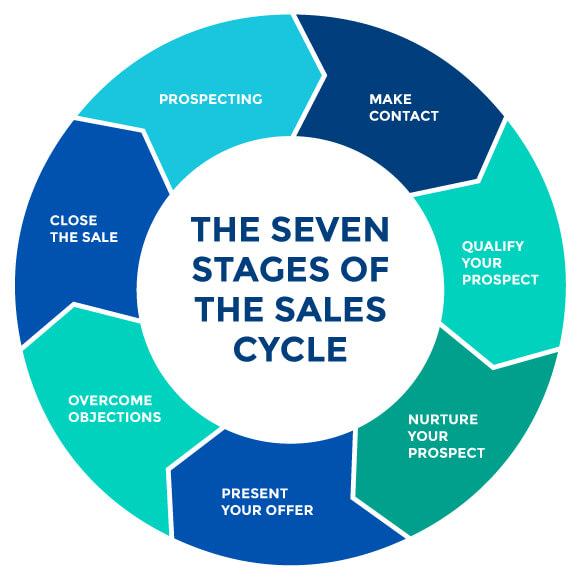Table of Contents
- Understanding the Domain Flipping Market and Its Profit Potential
- Essential Strategies for Successful Domain Acquisition
- Navigating the Sales Process: Tips from Industry Experts
- Valuation Techniques for Maximizing Domain Sales
- Building a Sustainable Domain Portfolio for Long-Term Success
- Q&A
- In Summary
Understanding the Domain Flipping Market and Its Profit Potential
In the ever-evolving landscape of digital commerce, flipping domain names has emerged as a lucrative niche. Many investors are drawn to this market due to its relatively low entry costs and the potential for substantial returns. Unlike traditional real estate, domain flipping provides a unique opportunity where individuals can buy, sell, and trade virtual assets with little more than an internet connection and some strategic insight. Successful domain flipping hinges on understanding market trends and recognizing the value associated with memorable, short, and keyword-rich domains.
When assessing a domain’s potential for profit, several key factors come into play:
- Keyword Relevance: Domains that contain popular keywords are often more coveted, as they rank higher in search engine results.
- Length and Memorability: Short, catchy domains are easier to remember and type, which boosts their marketability.
- Brandability: Domains that are easily associated with potential products or services attract more buyers.
- Domain Extension: While .com domains are typically preferred, niche extensions can also hold significant value depending on the target audience.
Investors should also be mindful of market timing and the overall economic environment. Just like physical real estate, domain values fluctuate based on demand and competition. Keeping an eye on emerging trends can yield profitable opportunities; for instance, new technologies or popular cultural phenomena can quickly increase interest in specific keywords. An effective strategy includes setting a budget for acquisitions, researching the competition, and employing a mix of passive and aggressive selling techniques, such as online marketplaces and auctions, to maximize returns.


Essential Strategies for Successful Domain Acquisition
When venturing into domain acquisition, it’s crucial to understand the market dynamics and identify domains that not only hold potential but also align with your long-term objectives. Start by conducting thorough research on trending keywords and industry niches. Use tools like Google Trends and SEMrush to unearth valuable insights. Look for domains that are short, memorable, and easy to pronounce, as these are often more desirable and can drive more traffic. Additionally, consider the use of a keyword-rich domain that resonates with your target audience to enhance SEO and marketability.
Engaging with communities and forums dedicated to domain flipping can provide you with a wealth of knowledge and insider tips. Networking with experienced flippers can shed light on emerging trends and best practices. Participate in online auctions and marketplaces such as GoDaddy Auctions or Flippa to stay updated on available domains and the price ranges. This exposure can also assist in learning negotiation tactics that can benefit your acquisition process. Make sure to evaluate each domain’s history using tools like Wayback Machine or DomainTools to avoid any potential pitfalls.
Once you’ve identified potential domains, it’s wise to create a budget and stick to it. Domain values can fluctuate, making it imperative to assess their worth accurately. Consider utilizing a comparison table when evaluating domains based on factors such as:
| Domain Name | Price | Potential Resale Value | SEO Metrics |
|---|---|---|---|
| exampledomain1.com | $500 | $1,500 | Domain Authority: 30 |
| exampledomain2.com | $300 | $1,000 | Domain Authority: 25 |
| exampledomain3.com | $800 | $2,500 | Domain Authority: 35 |
Keeping track of these elements will not only enhance your decision-making but also help you strategize for optimal returns in your domain flipping endeavors.


Navigating the Sales Process: Tips from Industry Experts
As you embark on the journey of domain flipping, understanding the sales process is paramount. Crafting a precise value proposition for your domain names elevates your chances of a successful sale. Expert sellers emphasize the significance of conducting thorough research to analyze market trends and comparable sales. Utilize tools like eBay, where direct interaction is seamless and trusted.
Lastly, after reaching an agreement, the closing phase demands attention to detail to ensure a smooth transition. Document all sales agreements and terms clearly to avoid misunderstandings. A checklist can be a valuable tool during this phase; it ensures that all necessary steps are followed to finalize the transaction. Below is a simple checklist to keep your closing process organized:
| Task | Status |
|---|---|
| Confirm Buyer Details | ✔️ |
| Prepare Transfer Documents | ✔️ |
| Receive Payment | ✔️ |
| Initiate Domain Transfer | ✔️ |
| Provide Support Post-Sale | ✔️ |
By following these expert tips and utilizing a structured approach, you will not only streamline your sales process but also boost your confidence in the competitive world of domain flipping.


Valuation Techniques for Maximizing Domain Sales
Understanding how to properly evaluate a domain can mean the difference between a lucrative sale and a missed opportunity. A thorough assessment involves analyzing several key factors. Start by considering keyword relevance; the more popular the search terms associated with your domain, the higher its potential value. Additionally, take into account the extension of the domain (.com, .net, etc.). While .com domains tend to hold the highest value, niche-specific extensions can also be beneficial, particularly in targeted markets.
Another critical aspect in valuation is the market demand for both the domain and its corresponding industry. Review current trends and industry growth, as domains linked to thriving markets naturally hold higher value. Furthermore, comparing your domain with similar sales in recent transactions can provide a benchmark for pricing. Utilizing platforms like SEDO or Flippa can yield valuable insights. Consider crafting a table for clarity on recent sales, showcasing both the similarities and disparities that can affect your domain’s appeal:
| Domain Name | Sale Price | Extension | Industry |
|---|---|---|---|
| example.com | $10,000 | .com | Technology |
| healthtips.net | $7,500 | .net | Health |
| investsmart.org | $5,000 | .org | Finance |
consider the traffic statistics associated with the domain. Established domains with existing visitors offer a significant advantage; consistent traffic can translate to sustainable interest and higher sale prices. Analyzing metrics such as monthly visitor count or search engine ranking can enrich the domain’s perceived value. To maximize your profits, invest time in validating these figures and ensure they are readily available for potential buyers. Emphasizing documentation for these statistics can enhance the credibility and attractiveness of your domain in the marketplace.


Building a Sustainable Domain Portfolio for Long-Term Success
Creating a domain portfolio that thrives for years requires careful planning and strategic investments. The first step is understanding the market trends and identifying domains that hold intrinsic value. Keywords play a significant role; choose names that are not only memorable but also include popular search terms relevant to your niche. Additionally, brands aiming for unique and catchy names can enhance your portfolio’s appeal, attracting potential buyers willing to pay a premium. The ultimate goal is to select domains that can act as digital assets, increasing their worth over time.
Next, it’s essential to diversify your holdings. Just as investors spread their risk across different asset classes, a robust domain portfolio benefits from variety. Consider these factors when adding to your collection:
- Top-Level Domains (TLDs): Invest in a mix of TLDs such as .com, .net, and .org to appeal to different buyers.
- Industry Focus: Look for domains in multiple sectors like tech, health, or e-commerce to capture diverse market opportunities.
- Local Keywords: Incorporate geographic regions into your domains to attract local businesses and services.
pay attention to ongoing trends and technology shifts, as this can significantly impact your domain strategy. Tools like Google Trends and domain valuation platforms can illuminate potential opportunities. To track and analyze your portfolio efficiently, consider creating a simple table to record your domains and their attributes:
| Domain Name | TLD | Valuation ($) | Expiration Date |
|---|---|---|---|
| HealthyEats.com | .com | 5,000 | 2025-01-15 |
| TechInnovations.net | .net | 2,500 | 2024-06-30 |
| NYCPlumbers.org | .org | 1,200 | 2023-12-05 |
This structured approach will not only make it easier to manage your portfolio but will also highlight potential gaps and areas for expansion. By keeping a close eye on market dynamics and adjusting your strategy accordingly, you can build a sustainable domain portfolio that promises long-term success.

